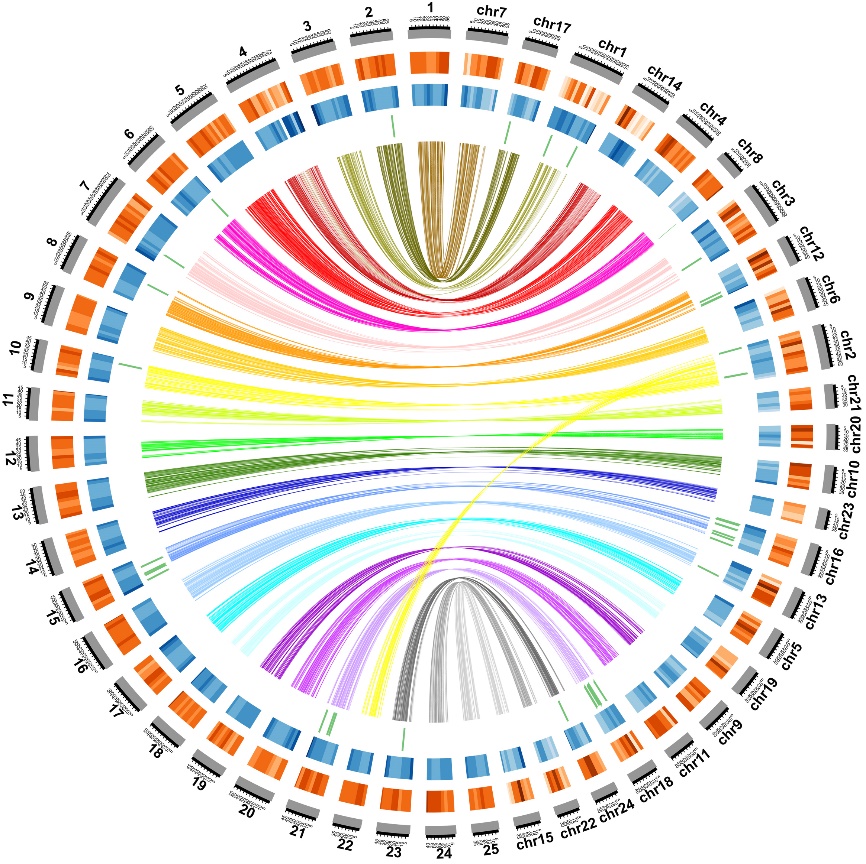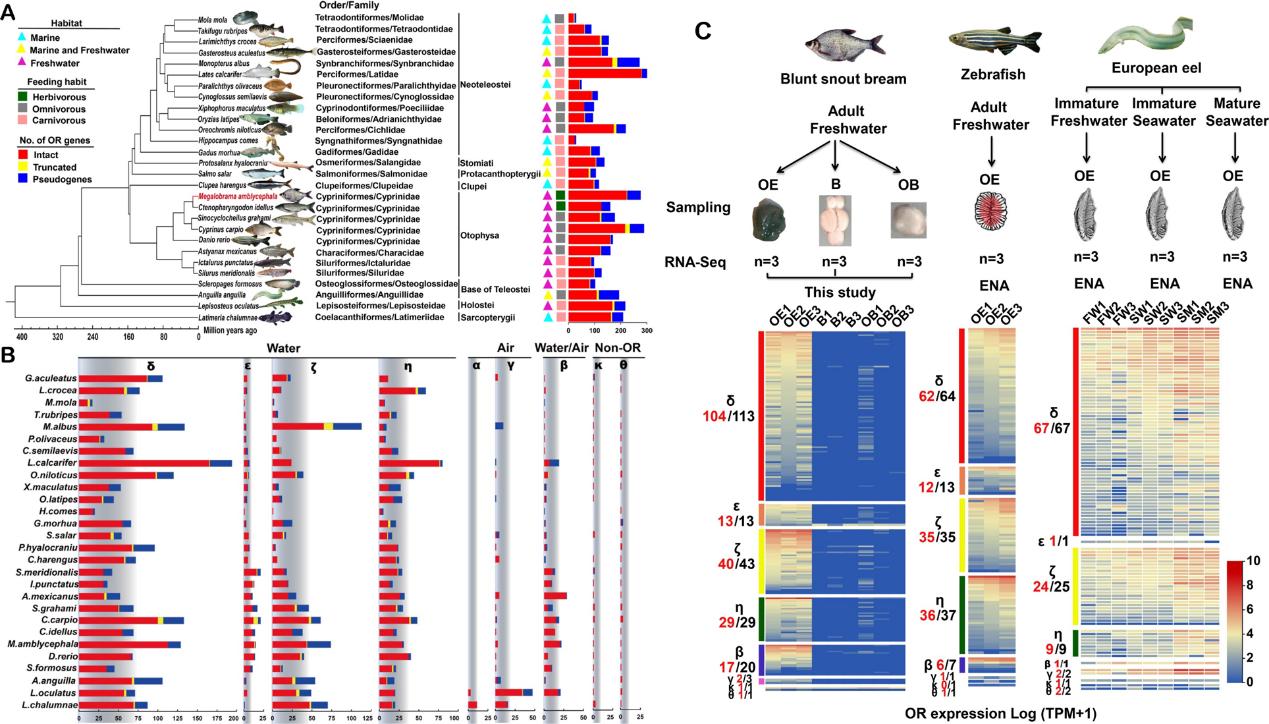南湖新闻网讯(通讯员 刘寒)近日,我校鱼类遗传育种与繁育研究团队公布了高质量的团头鲂(武昌鱼)基因组遗传图谱,基于比较基因组学探究了28种不同食性鱼类嗅觉受体基因(ORs)家族的进化历程和表达模式,发现鱼类ORs的进化与其栖息环境和食性密切相关,为鱼类摄食研究提供了新思路,也为鱼类定向育种提供理论支持。

团头鲂与斑马鱼基因组共线性分析
嗅觉是动物最重要的感觉系统之一。ORs主要在鼻腔嗅上皮中表达,可分辨各种不同的气味分子,在食物选择、有毒物质识别及躲避天敌中扮演着重要角色。ORs是脊椎动物中最大的基因家族之一,尤其是哺乳动物,其数目占整个基因组基因总数的5%,哺乳动物嗅觉受体进化与其食性密切相关,不同食性动物之所以能识别和区分成千上万种不同的气味,这与其基因组中ORs的数目有关。不同食性鱼类嗅觉进化历程有何不同,特别是植食性和肉食性鱼类嗅觉的遗传基础是有何差别还不清楚。

鱼类嗅觉受体基因家族的进化与表达模式
研究人员基于比较基因组学探究了28种不同食性(草食性、肉食性、杂食性和滤食性)鱼类ORs的进化历程,发现肉食性鱼类总ORs拷贝数显著低于草食性鱼类,淡水草食性鱼类特异性扩张ORs的β和ε亚型。科研人员认为这种扩张受到正选择压力驱使,通过对代表性鱼类的嗅觉器官转录组测序与分析,发现几乎所有ORs均表达,这一结果揭示了不同食性鱼类ORs的进化历程及其与食性的相关性,阐明了草食性鱼类和肉食性鱼类ORs的遗传基础,为进一步探究嗅觉在鱼类食性调控中的功能及分子机制奠定基础。
审核人:王卫民
【英文摘要】
The number of olfactory receptor genes (ORs), which are responsible for detecting diverse odor molecules varies extensively among mammals as a result of frequent gene gains and losses that contribute to olfactory specialization. However, how OR expansions/contractions in fish are influenced by habitat and feeding habit and which OR subfamilies are important in each ecological niche is unknown. Here, we report a major OR expansion in a freshwater herbivorous fish, Megalobrama amblycephala, using a highly contiguous, chromosome-level assembly. We evaluate the possible contribution of OR expansion to habitat and feeding specialization by comparing the OR repertoire in 28 phylogenetically and ecologically diverse teleosts. In total, we analyzed > 4,000 ORs including 3,253 intact, 122 truncated and 913 pseudogenes. The number of intact ORs is highly.
论文链接:https://academic.oup.com/mbe/advance-article/doi/10.1093/molbev/msab152/6277737?guestAccessKey=8ea0bded-aa5c-42cf-a16f-f42f5451c1ad

